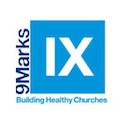 Getting Things Done, the best selling book by David Allen has become a virtual productivity cult manual. I first read about it via Chris Meirose’s blog article on Wayne Grudem’s implementation of the GTD system. I then begin to follow links here and there and have found an entire GTD sub-culture full of people creating a number of web-based tools to implement GTD as well as blogs which live for the latest GTD tips (some of which you can find through the productivity links on this blog).
Getting Things Done, the best selling book by David Allen has become a virtual productivity cult manual. I first read about it via Chris Meirose’s blog article on Wayne Grudem’s implementation of the GTD system. I then begin to follow links here and there and have found an entire GTD sub-culture full of people creating a number of web-based tools to implement GTD as well as blogs which live for the latest GTD tips (some of which you can find through the productivity links on this blog).
Being a Franklin Covey time/life management fan, I was a tad skeptical of Allen and his following. I have been using FC principles and software for a few years now and have benefited greatly from it. GTD seemed like it might simply get in the way of my getting things done. The following is my personal take on the book and its practical implementation implications.
David Allen has produced a book that aims to help an individual manage their time, workspace and ongoing projects while minimizing the mental stress that so often accompanies those who work behind a desk. GTD is arranged around three major parts: 1) The Art of Getting Things Done 2) Practicing Stress-Free Productivity and 3) The Power of Key Principles. Part one explains the GTD system from a bird’s eye view. Part two details the process of implementing the system and part three is motivational for keeping up with the GTD habits of personal time and space management.
Here are a few of my thoughts on its strengths and weaknesses. For me, the book was a tad bit difficult to process initially. The first three chapters were overwhelming in describing his system. I felt like it was impractical and too complicated to put into practice any time soon. However, once I began the second part of the book, I settled down. Part two is worth the money spent for the book. It is incredibly practical and detailed. Allen covers every potential tool you will need to implement the GTD system and works through the process methodically.
For me, the most important concept I gained from the book is to get tasks, projects and all the steps to accomplish them both, out of my head and into a system to help me manage it all in an orderly, efficient and highly effective way. His innovative two-minute rule has already helped me get a few more things done. The rule is simply this, as you are processing those items in your “in-box,” if you can complete what needs to be done with it in two minutes or less, do it right then. If not, determine when and how you will do it later.
 He provides plenty of practical examples of everything he recommends and is methodical in his explanation of how to implement the system. The system can be boiled down to five components: 1) collect everything that is in your office that is not exactly where it belongs 2) process everything you have, one item at a time 3) Organize what you are processing into actionable or non-actionable items 4) review your system weekly and 5) do those projects you have created.
He provides plenty of practical examples of everything he recommends and is methodical in his explanation of how to implement the system. The system can be boiled down to five components: 1) collect everything that is in your office that is not exactly where it belongs 2) process everything you have, one item at a time 3) Organize what you are processing into actionable or non-actionable items 4) review your system weekly and 5) do those projects you have created.
GTD is not without its limitations though. Really, only one chapter is devoted to how to get projects done effectively and efficiently. Franklin Covey has helped me out tremendously here with their Plan Plus overlay for Microsoft Outlook, which has a project planning tool for me to brainstorm projects and then seamlessly turn each thought into a task or appointment whenever I choose.
Also, GTD works well for white collar desk jobs. I’m not sure how it would help anyone else. GTD will not help you with managing the various roles and priorities of your life as efficiently as Franklin Covey’s material. With FC, I still do a weekly review and because I have dictated how it functions, I have set up a disciplined way to think about all those roles, projects and relationships that are most important to me and what I can do this week to give good attention to them. FC will help you manage your life as a good steward of those priorities God gives us. GTD will help you collect your thoughts, create an organized work flow process and keep your desk clean.
While I have not totally eaten the entire GTD enchilada, I did go to the office supply store with my wife and purchase most of what Allen instructed me to buy. I went over my notes with my wife and we took last Friday to implement the system in our home offices. I am slowly implementing it in my church office.
Overall, I am actually integrating FC and GTD and it is working quite well. Some of Allen’s suggestions, like the tickler file system, I have already been utilizing for a number of years. I will be implementing a number of Allen’s e-mail tips in the weeks to come.
If you don’t own a copy of GTD, you need to buy one and interact with it. I would also highly encourage you to use FC’s Plan Plus software. They just came out with version four which is absolutely fantastic.







I love the book and I’m trying to implement it. Good review. Thanks!
Steve, how long has it taken you to apply the GTD process?
Brett,
It takes some time. I haven’t totally implemented the process yet. I did not have the freedom to set aside a couple of days like he recommends, so I have been flying by the seat of my pants..
Glad you are finding it helpful. Justin Taylor linked to an interview with David Allen either today or yesterday. I really like the clarity and simplicity of GTD. As you state, the first segment makes you wonder if you are cut out for this process, but by the end of the book GTD has redeemed itself and make it starkly clear the areas of your life it could impact. I was a long time Covey Planner user when I was working for the BSA, but never really liked that system. It worked, but was cumbersome for me on a day to day basis. The GTD seems more managable for me in real life. I’m sure I learned some things from Covey that I carry over.
Just an FYI update, I’m currently finishing my final 2 courses of Seminary. I can’t wait to be done/am excited for the future!
Big Chris
Chris – praise God for the progress. Freedom from seminary is a mixed bliss. While in seminary, I loved the interaction with fellow students yet longed for the regularity of ministry. While out of Seminary I love the fellowship in the flock and miss the stimulation of the seminary environment. I’m schizo.
About the Covey system – I’m not sure I would be as big a fan if I didn’t have Plan Plus. If I had to do Covey planning on paper, I might drop it too soon. But, because I use MS Outlook so much, Plan Plus is profoundly helpful. I am still enjoying integrating GTD principles with my modified Covey approach.
Stay focused on the final classes – especially in the SNOW!! ick.